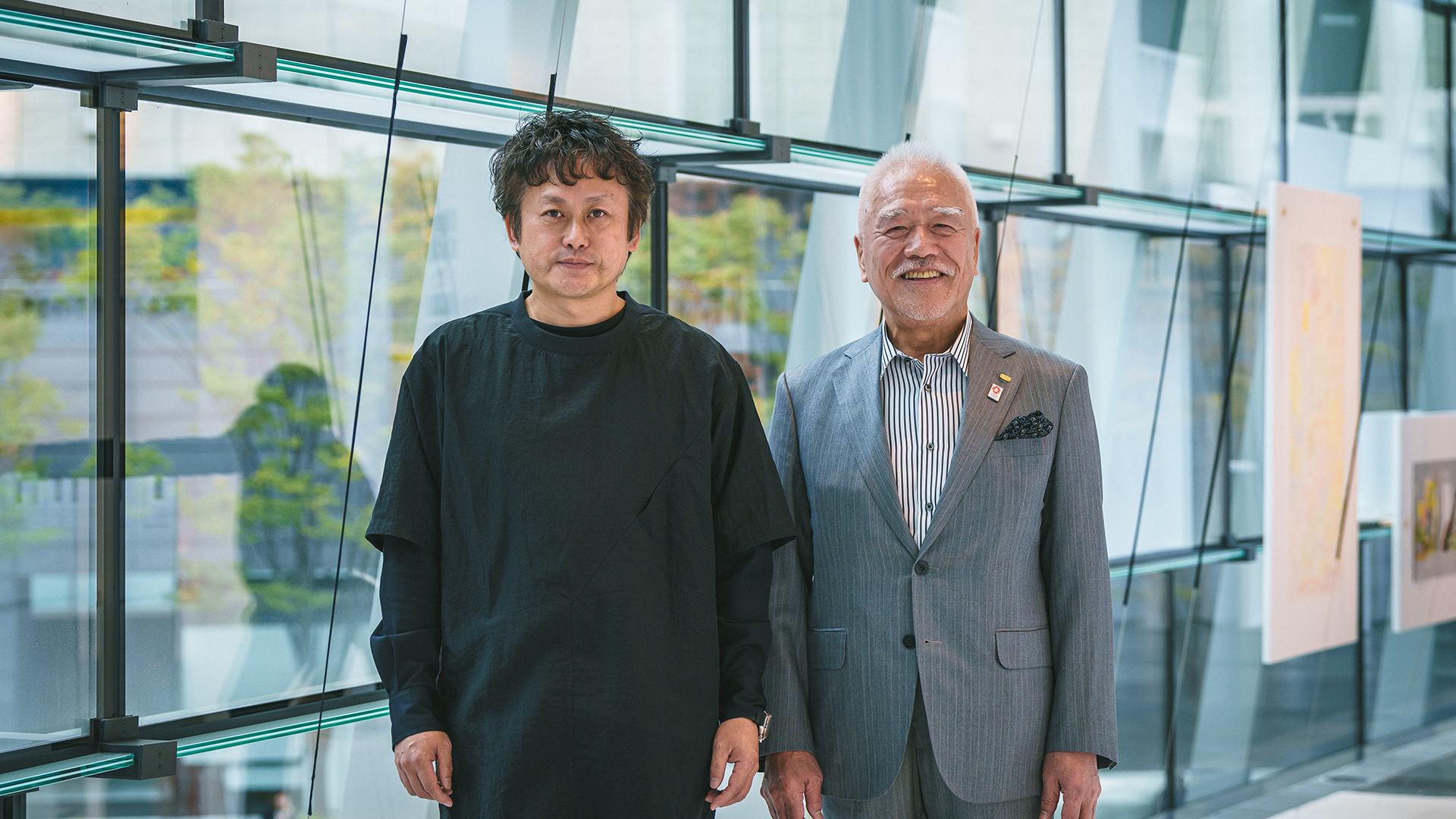
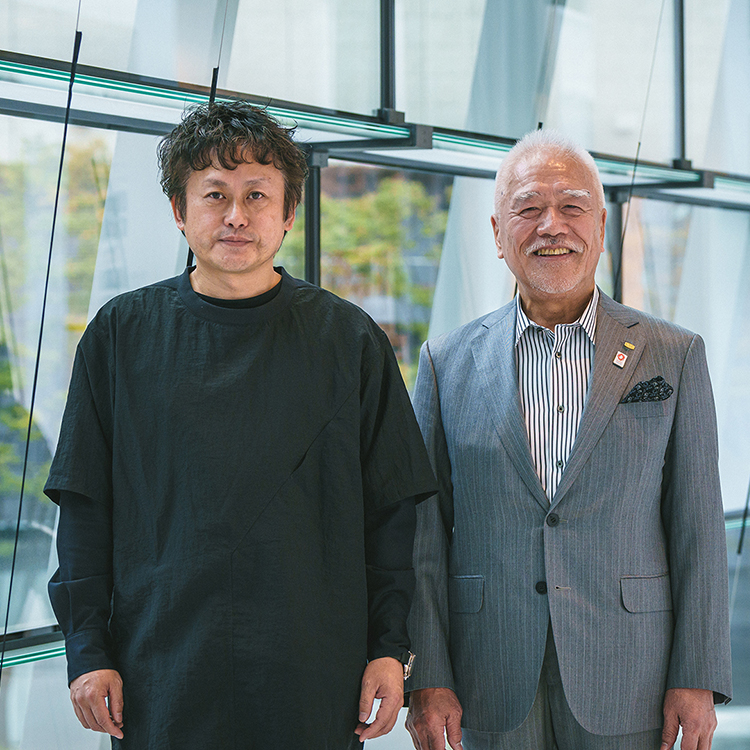


Junzo Tateno
CEO of UNION Corporation
Born in 1947, Junzo Tateno graduated from the Faculty of Law at Konan University (Kobe, Japan) in 1970
and entered Aoki Construction that same year. He joined UNION in 1973 and became CEO and President in 1990.
He serves as Chairman of the Union Foundation for Ergodesign Culture, a Public Interest Incorporated Foundation,
and the Osaka Industrial Bureau. He is also Vice Chairman of the Osaka Chamber of Commerce and Industry.
Jun Igarashi
Principal Architect at Jun Igarashi Architects
Born in 1970, Jun Igarashi founded Jun Igarashi Architects in 1997. Taking coexistence with the climate, environment, and landscapes of Hokkaido as the premise of his work, Jun Igarashi questions the universal values of architecture and explores the beginnings of this tradition beyond the simple existence of buildings themselves.
In his creations, he continues to constantly search for the state of "the original place of human beings."
Jun Igarashi's major awards include the 19th Yoshioka Prize, the 21st JIA New Architect Award, the 2018 AIJ Education Award, grand prize in the Osaka Contemporary Theater Festival's Temporary Playhouse Competition, the grand prix at the Biennale Internazionale di Architettura Barbara Cappochin (Italy), AR Awards 2006 (U.K.), the Good Design Award, the AIJ's Hokkaido Architecture Award, and the Dedalo Minosse International
Architecture Prize Special Jury Award (Italy), among many others.
18
TATENO
You were born in Hokkaido, correct?
IGARASHI
That’s right.
TATENO
I’ve visited Sapporo several times and have also been to Abashiri near your hometown. It must be better for an architect to have the foundational experience of being born and raised in a place rich in nature, as you were, rather than spending one’s childhood in a convenient but less stimulating urban environment.
IGARASHI
Children are stimulated differently depending on where they are born and raised, so it's hard to make a general statement. I’m from a place called Saroma, and while small, I grew up in the urban part of this town. According to my memory, there were always a lot of buildings, and I often played in the alleys or at the nearby shrine, which happened to be right next to my home. My parents weren't overprotective, so we frequently visited rivers and mountains as well.
TATENO
So it was a place where you could experience both the good sides of nature and the city.
IGARASHI
You could say that.
TATENO
When I was little, I grew up in Toyonaka in Osaka. At that time, children hardly played at home, and instead spent most of their time frolicking outside in nature. I feel that it is quite different with children today.
IGARASHI
The way children play today is much different, isn't it?
TATENO
Switching gears, I heard that your grandfather was a carpenter.
IGARASHI
That’s right. My grandfather told me that, originally, he was involved in military engineering, constructing barracks and bridges in the field. Afterward, he ended up in Saroma and started a construction firm, although I’m not sure of the details of how this happened.
TATENO
While the environments you grew up in were different, Tadao Ando had a construction site near his house, which is what first spurred his interest in architecture. Similarly, did you become interested in the architectural profession because there was a place so close to you related to architecture?
IGARASHI
I may have been influenced by the fact that my grandfather’s construction firm was nearby. In the past, carpenters used to live at the construction company. There was a dog and lots of cats at the house as well. For a child like me, it looked like a lively place, and seeing my grandfather working in such an environment appeared really fun.
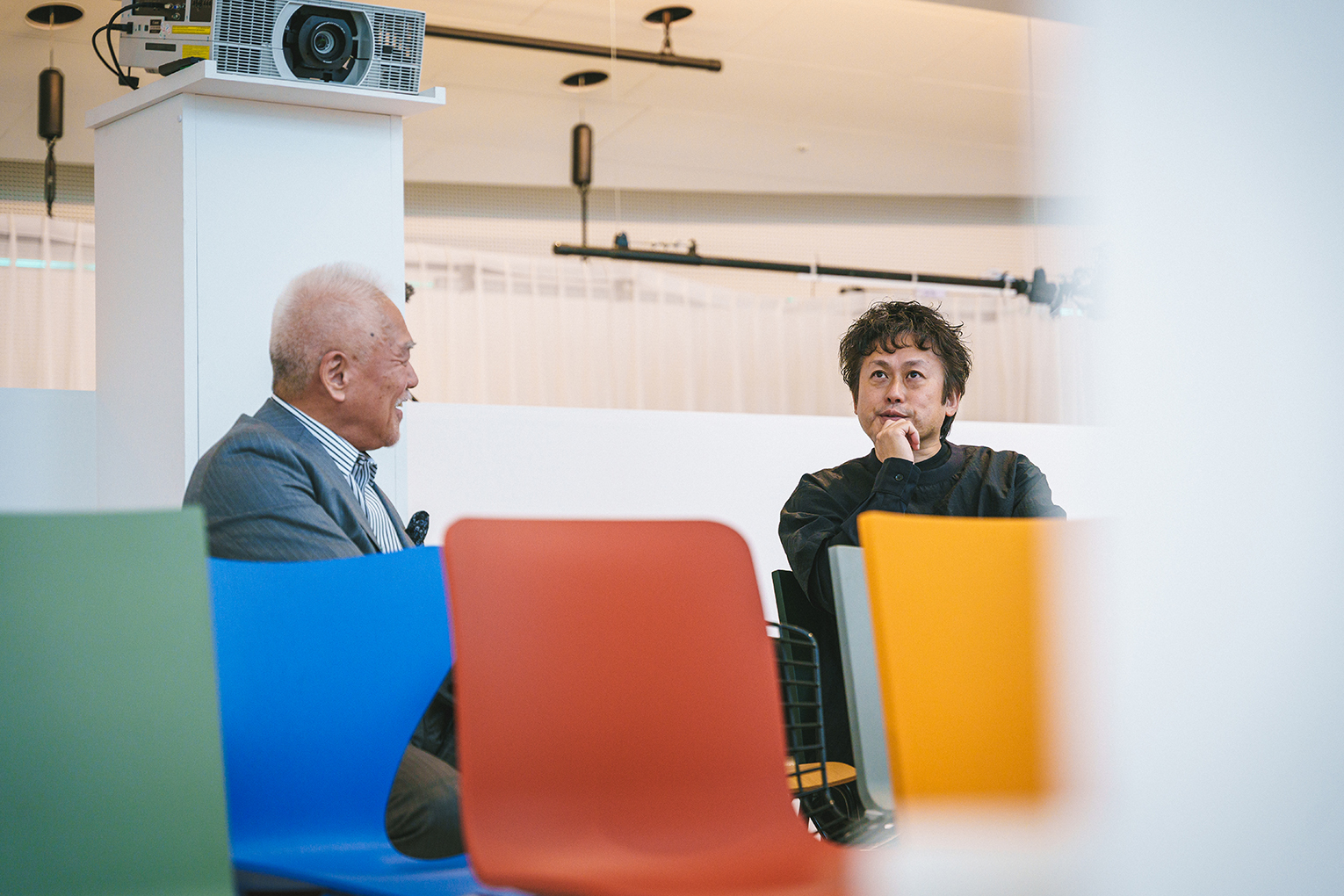
TATENO
Indeed, long ago, there were many tradesmen who lived and trained at work, in addition to carpenters. Did your grandfather primarily construct houses?
IGARASHI
I heard that they made and sold anything that could be crafted from wood. Given the snowy region, they even crafted dog sleds by bending wood. It must have been a trying time, but even in a country town, there seemed to be a lot going on.
TATENO
I heard you enrolled in an architectural school in Sapporo after graduating high school. So, as you mentioned earlier, you became interested in architecture because of the environment you grew up in. Is that right?
IGARASHI
Yes. I recently participated as a judge in the Under 35 Architects Exhibition 2023, and when I looked at the career paths of the other judges, I saw that they all belonged to elite programs, so I guess my background is a little different. *Laughs.*
TATENO
But I, for one, believe that the industry needs people who have not taken the path to become a typical architect. Since architecture is the manifestation of a person’s thoughts and ideas, it should be an industry where various personalities take part. Ando's career is one such example. Even Le Corbusier became a world-famous architect after being self-taught. I believe that such people open up new avenues in architecture.
IGARASHI
That may certainly be true.
TATENO
Of course, architects who have taken more traditional paths are wonderful, too.
It’s this mix of different people that makes the architectural industry so exciting.
IGARASHI
I am jealous of people who belonged to elite programs though. *Laughs.*
TATENO
You’ve won the Yoshioka Prize, which Kazuyo Sejima has also received.
IGARASHI
That’s right. I won this award for my work title “Rectangular Forest,” which was completed in 2000. This project is also my home.
TATENO
Is that so!? You live there?
IGARASHI
Yes. I built this place when I was 30 years old.
TATENO
Did you take on this project with the intention of winning an award?
IGARASHI
At the time, if you didn't make a good product, no one would take you seriously, so in my own way, I designed it wholeheartedly with the aim of winning an award.
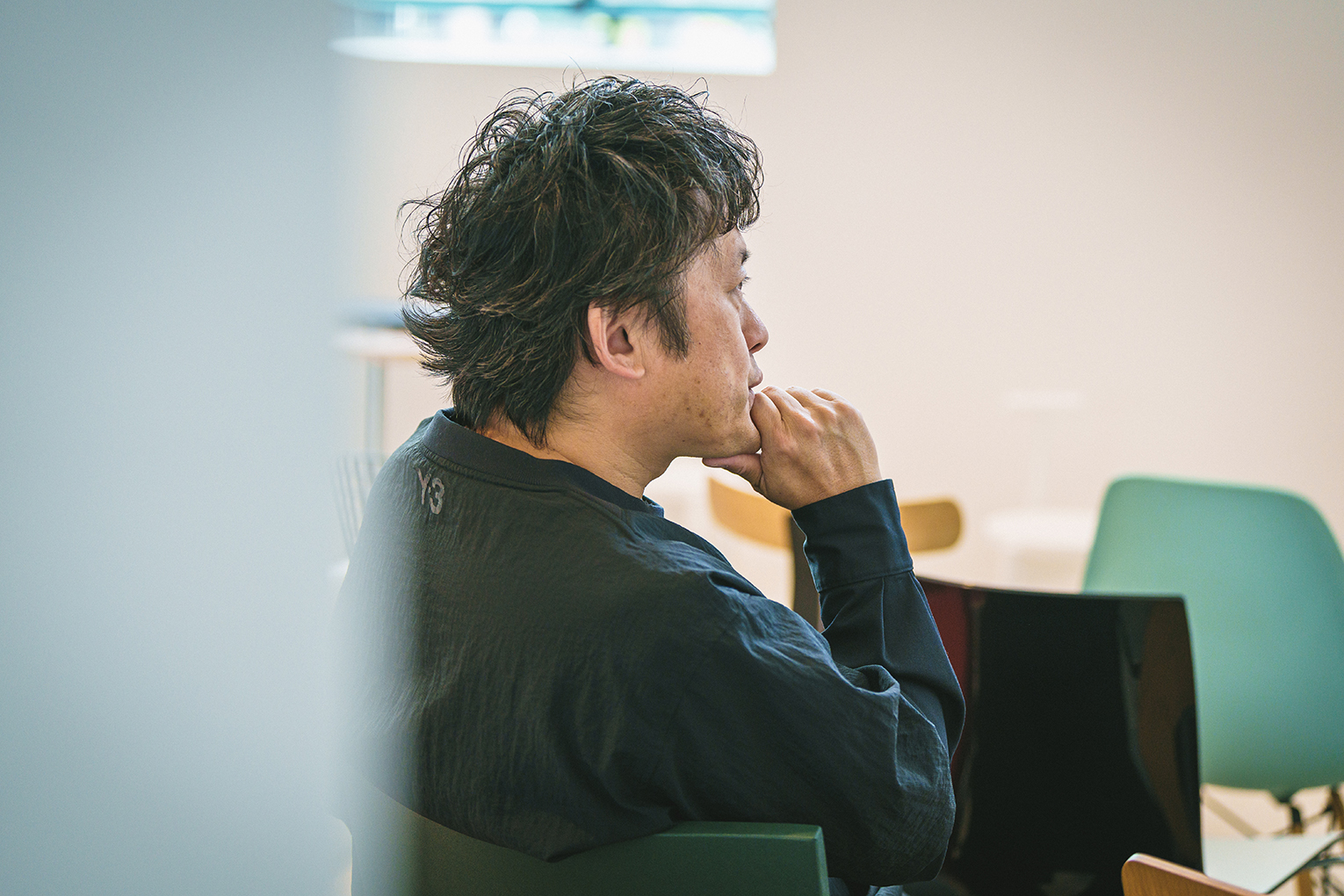
TATENO
The Yoshioka Prize has a long history, so it's great that you went for it and won it.
IGARASHI
Thank you.
TATENO
After winning the prize, did you find that work came around to you more effortlessly?
IGARASHI
Actually, that wasn’t the case. Even after winning the award things were slow, so I really gave it my all when I occasionally did get work. That said, I enjoyed many more opportunities to meet new people.
TATENO
You must have met some kindred spirits, no?
IGARASHI
I met Tsuyoshi Tane and Sou Fujimoto when I was around 31.
TATENO
So were they both your friends and rivals in a way?
IGARASHI
No. They were so exceptional that they were on another level from me. Their architectural works are completely different from mine, so I’m always watching what they do from afar. *Laughs.*
TATENO
You, Tsuyoshi Tane, and Sou Fujimoto are all leading Japanese architects. I believe you and Mr. Fujimoto are close in age, but Mr. Tane is from a bit of a different generation.
IGARASHI
That’s right. Mr. Fujimoto and I were judges at a critique session organized by Tsuyoshi for graduation designs. I remember thinking then that he was a very skilled and nimble architect. After this, I heard Tsuyoshi went to Mr. Fujimoto's office for an internship or to work at one of his open desks, before going abroad to study.
TATENO
Mr. Tane is still active overseas, isn't he? You are working in Hokkaido now, but are you thinking of opening an office in Tokyo or overseas in the future?
IGARASHI
Not at all. I’ve never lived in Tokyo, and what’s more, I don’t have any work or projects there. First, there must be something to work on. Next, it’s important for me to have a place where I can take my time with the projects I receive. Ideally, you want to get a job close to your office. That way, you can visit the construction site whenever you like.
TATENO
Indeed, looking at your work, it is clear that you are devoted to your clients.
TATENO
What’s your outlook for the future of the architectural industry?
IGARASHI
I think things are going to change dramatically. I don’t know if this is a nationwide trend, but the average annual income for an office worker in Hokkaido is lower than in other areas, so the amount you can take out for a loan is naturally lower. A person working for a small or medium-sized company can typically borrow about 30 million yen. Even though land costs are lower in Hokkaido than in other areas, if a piece of land is purchased for 10 million yen, it is difficult to say whether a house can be built there with the remaining 20 million yen. I think the trend for purchasing ready-built houses or condominiums will naturally increase as a result.
TATENO
I see. Places like Niseko in Hokkaido, have really seen an increase in foreign visitors, haven’t they? Actually, I visited Es Con Field Hokkaido the other day.
IGARASHI
Oh, the one in Kita-Hiroshima?
TATENO
That’s right. There is a lot of urban development taking place in that area, isn’t there?
IGARASHI
There is.
TATENO
The stadium Es Con Field itself is an interesting structure with a bit of a different design. Your works also skillfully incorporate unconventional elements to create houses and other structures.
IGARASHI
Thank you. Regarding residences, I guess you could say that I don’t construct them based on a conventional idea of “the home.” I try to build houses that are comfortable to live in, but don’t get tied up in everyday customs or norms. Since I was a child, I hated being restrained by what was considered “common sense.”
TATENO
I also tell my employees daily to take on new challenges. It’s important to wow the person engaging with a work, and by trying out new things, you can capture their interest. If you’re always doing the same thing over and over, eventually the customer will stop looking at your products.
IGARASHI
Interesting.
TATENO
Listening to you just now, I thought that you must have a similar feeling about this.
IGARASHI
Since I was a kid, I have always questioned when something became common sense or the norm, like with the subjects we learn in school. Society is, in a way, a form of religion, and there are lots of little religions scattered around throughout it. I think companies are another form of religion. Today, rather than watching TV, children spend their time on YouTube, and some of these little known YouTubers serve as a sort of god to these kids.
TATENO
You’re right about that.
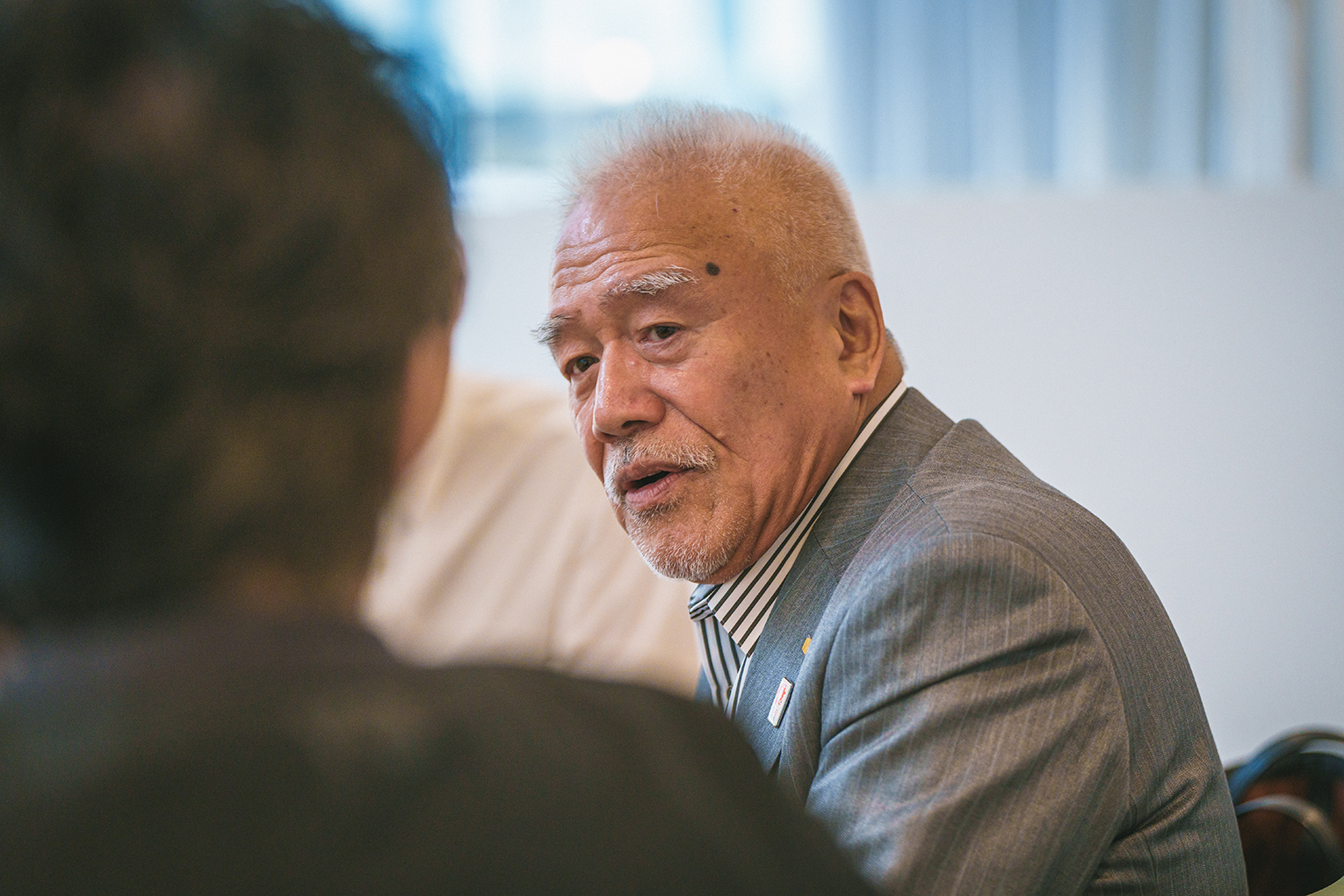
IGARASHI
A society of such small religions becomes very complex. It has been about 100 million years since the arrival of primates on Earth, but over this long period of time, ideas have accumulated in a complex manner up to the present. I think it is very difficult to think about and create something while keeping track of all these complexities, but we must keep the threads of our thoughts flowing. That said, I try to keep my distance from historical cycles and customs.
TATENO
Meaning?
IGARASHI
For example, you have some Asian people who religiously consider meat to be taboo. It’s highly likely that this belief may have been enforced by a religion’s founder due to some sort of view they held that made them not want people to eat meat. I think that believing in a religion is necessary as it provides people with something they can depend on, and each person should be able to choose their own way to live, but it’s also important to change with the times. That said, there is a chance that certain changes will upend the composition of society, so actual change can be quite a difficult thing.
TATENO
That’s really interesting. Aren’t there some aspects of architecture that have changed over the ages?
IGARASHI
I don’t think architecture has changed at all. It may become more rational, or there may be new technologies we employ, but the essence of architecture has remained the same.
TATENO
Looking back to the past a bit, the Osaka World Expo was held in 1970, and at the time, various companies succeeded in developing new, innovative building materials thanks to the expo. For the upcoming Expo 2025 Osaka, we have to take things like the UN’s SDGs into account, so I’ve been seeing a large number of renewable building materials being used, mainly made of wood. It makes me wonder why we don’t promote more new building materials aimed at the next generation. It’s a little disappointing to me that we are not actively taking on new challenges as we did in the past.
IGARASHI
I agree.
TATENO
For all the claims of progressive things being done at this international expo, perhaps architecture itself has not really changed, as you have said.
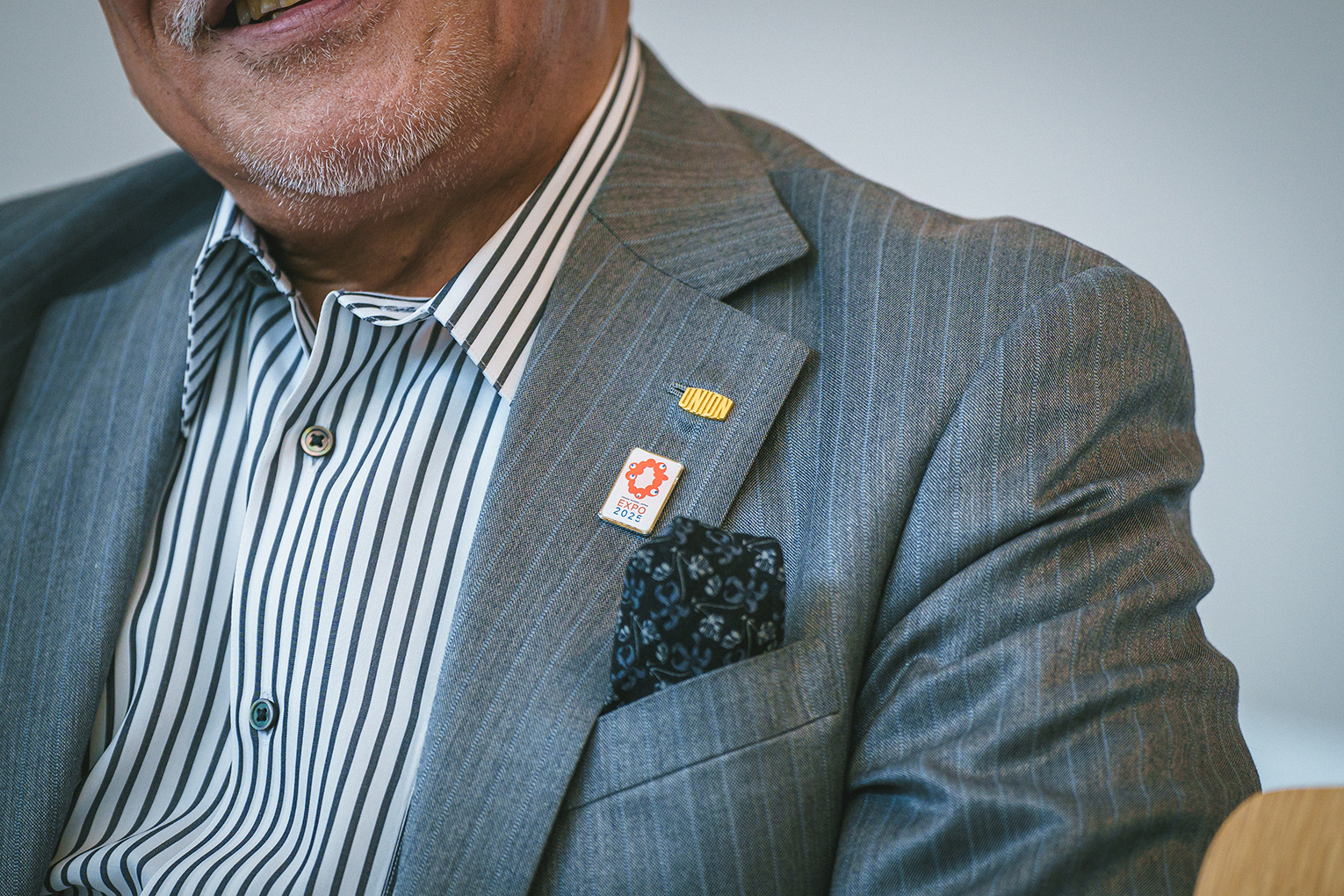
IGARASHI
I certainly feel that something is lacking at this point. This is purely conjecture, as I was not able to take part in the 1970 Osaka World Expo, but I get the sense that it created a sort of futuristic atmosphere. I don’t think we are going to get a real sense of the future at Expo 2025 Osaka. That may be one limitation of architecture today.
TATENO
European companies are taking drastic actions to address environmental issues, and I often see interesting announcements and other developments being featured on the news. I feel like western nations are coming up with new things to stay in touch with the times.
IGARASHI
The shift to EVs is progressing, particularly in the European automobile industry. In Europe, gas prices are very high compared to Japan, and gasoline-powered cars are being phased out. I find it very interesting that even under such circumstances, the discussion does not turn to cars themselves. Talking about sustainability without discussing this is not very convincing to me.
TATENO
I certainly get the impression that people are not debating the car itself.
IGARASHI
Exactly. A car usually seats five people, but when you think of daily use scenarios, there are typically only one or two people onboard. Yet, car bodies are huge. The reason for this being is that people see value in owning a large car as a status symbol. Plus, cars feature various different designs, and some are unnecessarily fast.
TATENO
This is true.
IGARASHI
When you think about it, that kind of functionality or appearance isn’t really necessary. You can fit about 30 electric scooters in a parking space that could hold one car. Compared to cars, this is much better for the environment. I believe the fact that such a discussion does not occur is a manifestation of the historical cycles of mankind. In a sense, I get this same feeling of "boredom" toward everything, and I think I feel the same way about the architectural industry. I don’t think that this problem will be solved during my lifetime though.
TATENO
It’s indeed important to rethink the fundamentals of things. Earlier, you mentioned that architecture has not changed. In the past, Hokkaido faced various problems such as water freezing over, which made it impossible to build in the winter.
IGARASHI
That’s right.
TATENO
Do you think it’s because of technical advancements that we can now build in the winter as well?
IGARASHI
The reality is that we have to earn money during the winter months, so we have become more rational in our work. Wooden and steel frame construction can be done in cold weather, so we take measures by completing the concrete foundation work, etc. during seasons when water won’t freeze. In Hokkaido, construction usually starts in April or fall; if construction starts in April, it is completed around August, or construction will start in September and be completed in March. This cycle is standard. So it is very difficult to secure builders and carpenters during this period. Everyone is very busy.
TATENO
Retaining these workers is also an issue, isn’t it?
IGARASHI
Yes. When there is a shortage of builders and carpenters, the first thing people think about is mechanization and rationalization. For some reason, the discussion does not move in the direction of establishing a school to train these types of workers. Instead, people start thinking that architecture can be created without this human touch. But architecture cannot be created without people. Various industries exist for the benefit of us all, but now people are starting to try to advance society without the use of people. I think this is misguided.
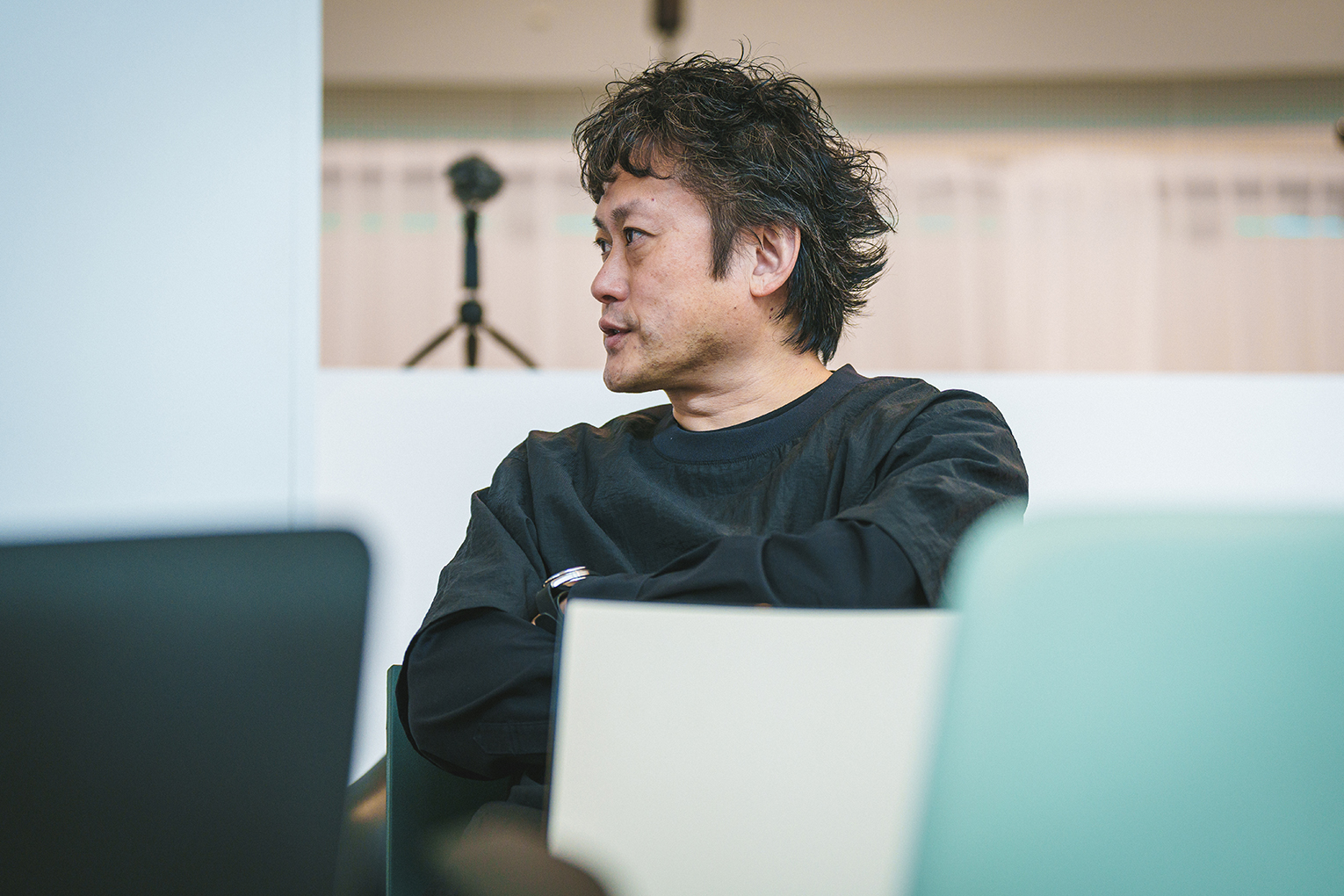
TATENO
You said it! Although computer-based manufacturing and automation are advancing in our business as well, the hands-on work of craftsmen is still very important. Without craftsmen, we would end up with door handles that lack humanity, and even if those handles adorned a piece of architecture, they would feel somewhat tasteless.
IGARASHI
Major home manufacturers take a systematic approach to building houses in order to avoid customer complaints. They use ready-made parts and materials at the construction site, and may consider the quality of hand craftsmanship to be a liability, since their goal is "no complaints." There is also the issue of cost.
TATENO
Even if the cost is a little higher, I think it's okay to choose based on criteria such as the design’s quality or the impressiveness of the manufacturing method.
IGARASHI
To change the subject a little, I became an architect because of Tadao Ando. I imagine that one of the reasons he became a world-class architect is because of the quality of his work.
TATENO
Is that so?
IGARASHI
When you commission Mr. Ando to build something, you know he will provide you with a structure of guaranteed quality. The client understands this from the beginning. Regardless of the design, Mr. Ando always delivers top-quality architecture after taking the requests of the client into consideration. This sense of security is probably the reason why he has received so many architectural commissions.
TATENO
Of course, Mr. Ando’s designs are wonderful, but he must also have continually earned his clients trust through his approach to work.
IGARASHI
When I visited Shanghai, local developers really spoke highly of Mr. Ando’s quality. They said that his firm has a solid management structure, and that when contacting it, they get a response immediately. In other words, being able to do the expected things naturally and having a sincere attitude towards one’s clients are crucial qualities for an architect.
TATENO
About 20 years ago, I visited Manhattan. At that time, there were many sights to see in the city and its architecture, and each building had its own character. Now, New York is becoming more and more similar in its architecture, and I don’t see many major changes. It’s a bit boring.
IGARASHI
Most clients seek a sense of reassurance, so they often choose to work with architects who can visualize the end result and reproduce it. In old New York, building owners used to commission architects with requests like "create something that will act as a symbol for me." With such requests and the competition that ensued, distinctive buildings naturally came into being.
TATENO
Are you saying that people who make such requests are no longer around?
IGARASHI
I think there are a lot less than before.
TATENO
When you look at the city rebuilt after the Great Hanshin-Awaji Earthquake, you see that most buildings are quite similar. Given the background of post-disaster reconstruction, the focus was understandably on creating safe and secure homes. Consequently, it's inevitable that many homes ended up looking alike. However, this made the cityscape rather bland. In the past, there were many uniquely Japanese-style homes.
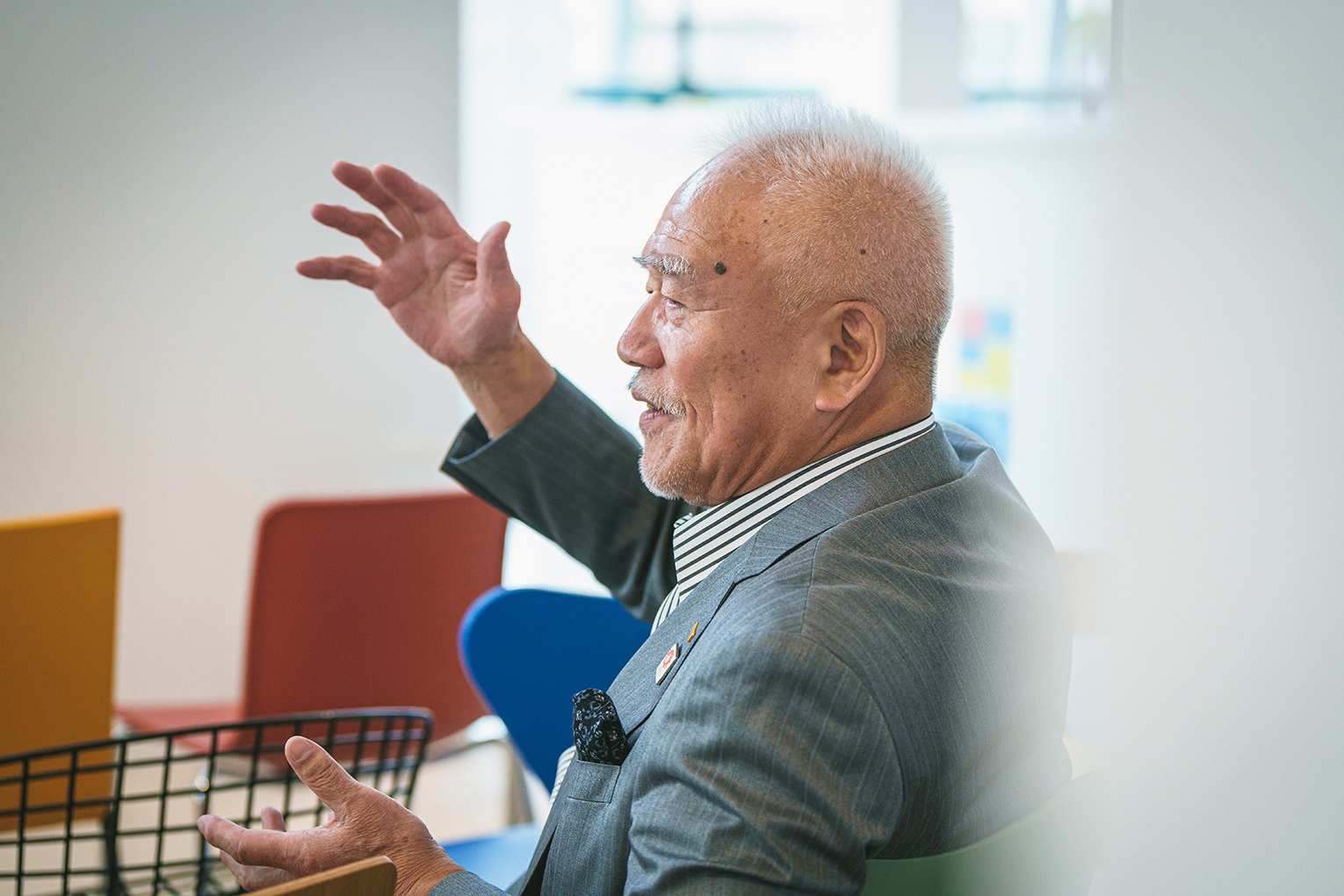
IGARASHI
We Japanese may think so. However, from the viewpoint of people from overseas, it can be seen as something new and refreshingly Japanese. It's also possible to view them as characteristic of the local architecture post-disaster.
TATENO
I see. In addition to architecture, I also hope to create things that can be used for 100 or 200 years, utilizing natural materials and allowing people to enjoy the changes over time. In the past, we created products like brass levers with clear coating. As they were used, the coating would gradually wear off, adding character. I hope people can appreciate such transformations over time.
IGARASHI
A brass lever, you say? That must really bring a nice atmosphere to the space.
TATENO
Thank you. There's another observation I've made about Japanese homes. Recently, I was talking with an acquaintance who is a doctor, and we discussed how current homes are increasingly adopting universal design. When elderly individuals live in such environments, they tend to develop a gait. If this lifestyle becomes the norm, going outside becomes challenging, as not everything outside is flat, leading to inevitable stumbling. Therefore, I believe it might be necessary to intentionally create opportunities within homes for people to lift their feet and avoid the unintended consequences of universal design, which often makes life out in the real world more challenging.
IGARASHI
That’s a great point.
TATENO
It seems that by excessively pursuing comfort in living spaces, homes might unintentionally contribute to the physical decline of the human body.
IGARASHI
Somewhere along the line, society as a whole has been moving in the direction of "dehumanization". When you go to Asian cities, there are still many bumps in the road. In this sense, Japan may be a good country for many people to live in.
TATENO
The area around JR Osaka Station is now under development, but the price of a condominium currently under construction there is 2.5 billion yen.
IGARASHI
For a single apartment? That’s incredible.
TATENO
In Tokyo, some rooms are priced at over 10 billion yen, so I think this, too, is just a part of the times we live in. Recently, general contractors have become very powerful. How do you feel about this?
IGARASHI
The momentum of general contractors is increasing year by year, and their design capabilities are also improving, making ordinary architects less necessary. It seems that only architects with strong personalities and innovative design in areas other than housing can survive.
TATENO
That is certainly a possibility. When talking with architects handling large-scale projects, it seems that no matter how much they emphasize design and convince the client, the reality on the construction site may deviate due to various factors such as costs and owner preferences. It's important to explore and choose what is best for society and the city in the long run, isn’t it?
IGARASHI
You’re right about that.
TATENO
In the past, architects used to personally select the interior design elements for their works.
IGARASHI
Yes, I’m envious of the time when architects could create everything, from switch panels and lighting fixtures to other intricate design details, all from scratch. It was an era when if you wanted to create something, you could. There were many local workshops, plenty of craftsmen, and it was more affordable to build something. This allowed for the realization of diverse and unique architectural designs. Nowadays, the world has changed, and the process has become more complex.
TATENO
Yes.
IGARASHI
The moments when architectural giants like Le Corbusier and Mies van der Rohe were creating architecture seem vastly different from the moments when we are creating architecture today. While visiting their buildings is truly inspiring, it's not fair to simply compare the past and present. Therefore, when teaching architecture to students, it's essential to also provide context on the historical background and societal conditions during the time when those earlier buildings were constructed.
TATENO
Indeed, what was acceptable in the past may not be tolerated today, and compliance standards have become stricter. For projects like pavilions at expos or stadiums for the Olympics, having an award-winning track record becomes crucial, making the barriers quite high. It would be ideal for young professionals to have the opportunity to work on and complete architectural projects, gaining the experience needed to become globally recognized architects.
IGARASHI
Well said.
TATENO
When you were a student, I imagine you did your architectural drawings by hand. Thinking back on that, do you feel it was worthwhile?
IGARASHI
Absolutely, engaging in the physical act of designing while thinking critically is akin to a form of sport. Being able to conceptualize ideas through hands-on work is certainly valuable.
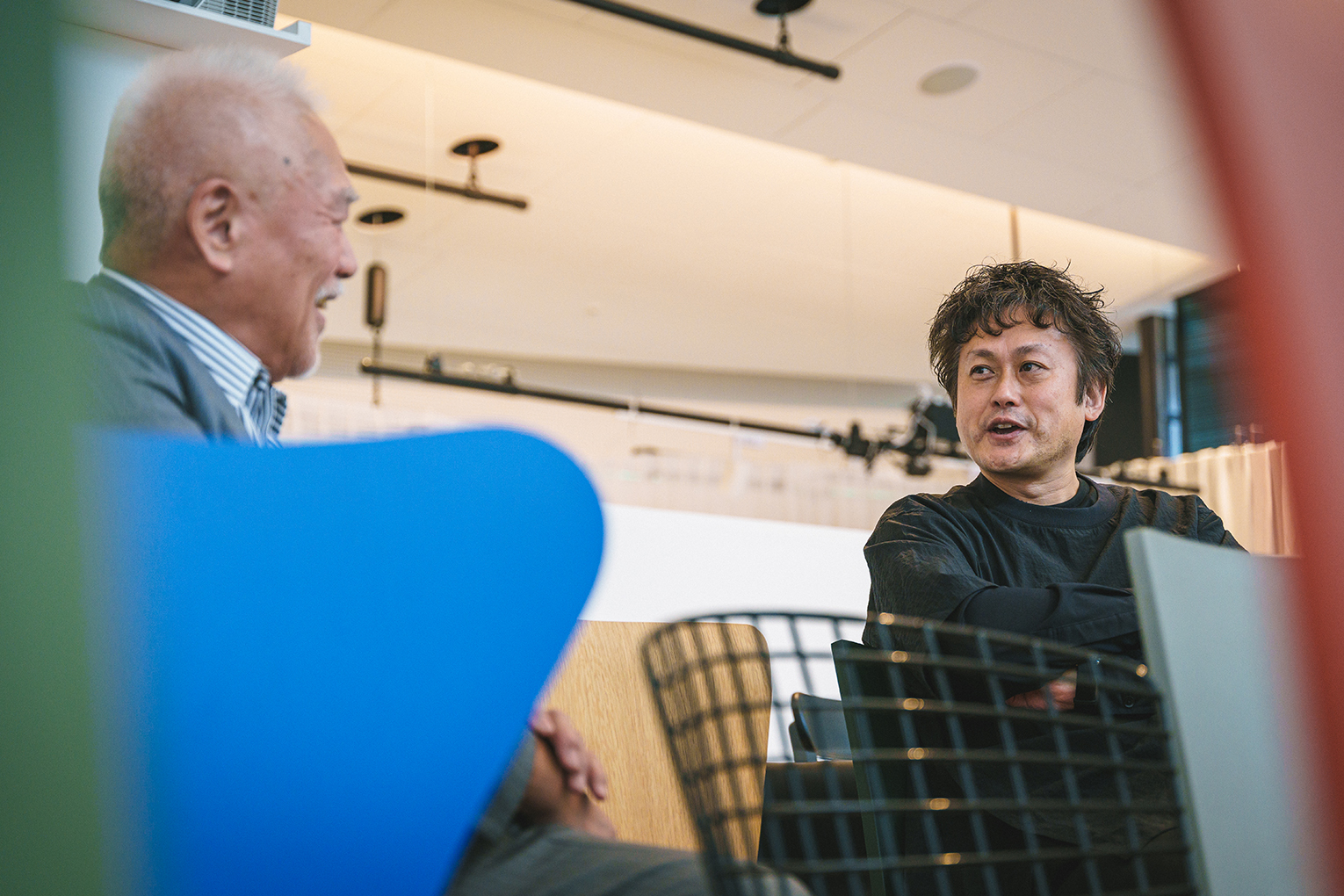
TATENO
I agree, getting hands-on is a great way to cultivate creativity.
IGARASHI
You make a good point.
TATENO
Certainly, computers are convenient, and as technology advances, they can handle many tasks. However, when you're young, I believe it's essential to physically create something using your own body.
IGARASHI
Creating something truly exceptional may indeed require the hands-on involvement of the body.
TATENO
I agree. Lastly, I’d like to ask you what kind of architecture do you plan on working on in the future?
IGARASHI
I want to continue enjoying the projects I receive, while focusing on satisfying my clients, so I would like to pursue these aspects of my work. Projects with too many people involved do not align well with my personality. I prefer facing clients directly and delving into the details as I create my architecture.
TATENO
So you don’t have much interest in large-scale architectural projects?
IGARASHI
I want to try creating large structures, but when people who truly love architecture or are knowledgeable about it evaluate others' works, their criteria are not based on scale or size. They are moved by the intentions and emotions of the architect that are reflected in the design. I enjoy visiting buildings, and the impact doesn't necessarily come from their size; sometimes, small buildings can bring tears to my eyes. I aspire to create such architecture.
TATENO
I look forward to your future work.
*Interview concludes*
Both
Thank you very much.
Planning: Naoyuki Miyamoto
Photography: Kesuke Kitaura
Writing: Fumiya Daito
Web Direction: Ryo Kijima